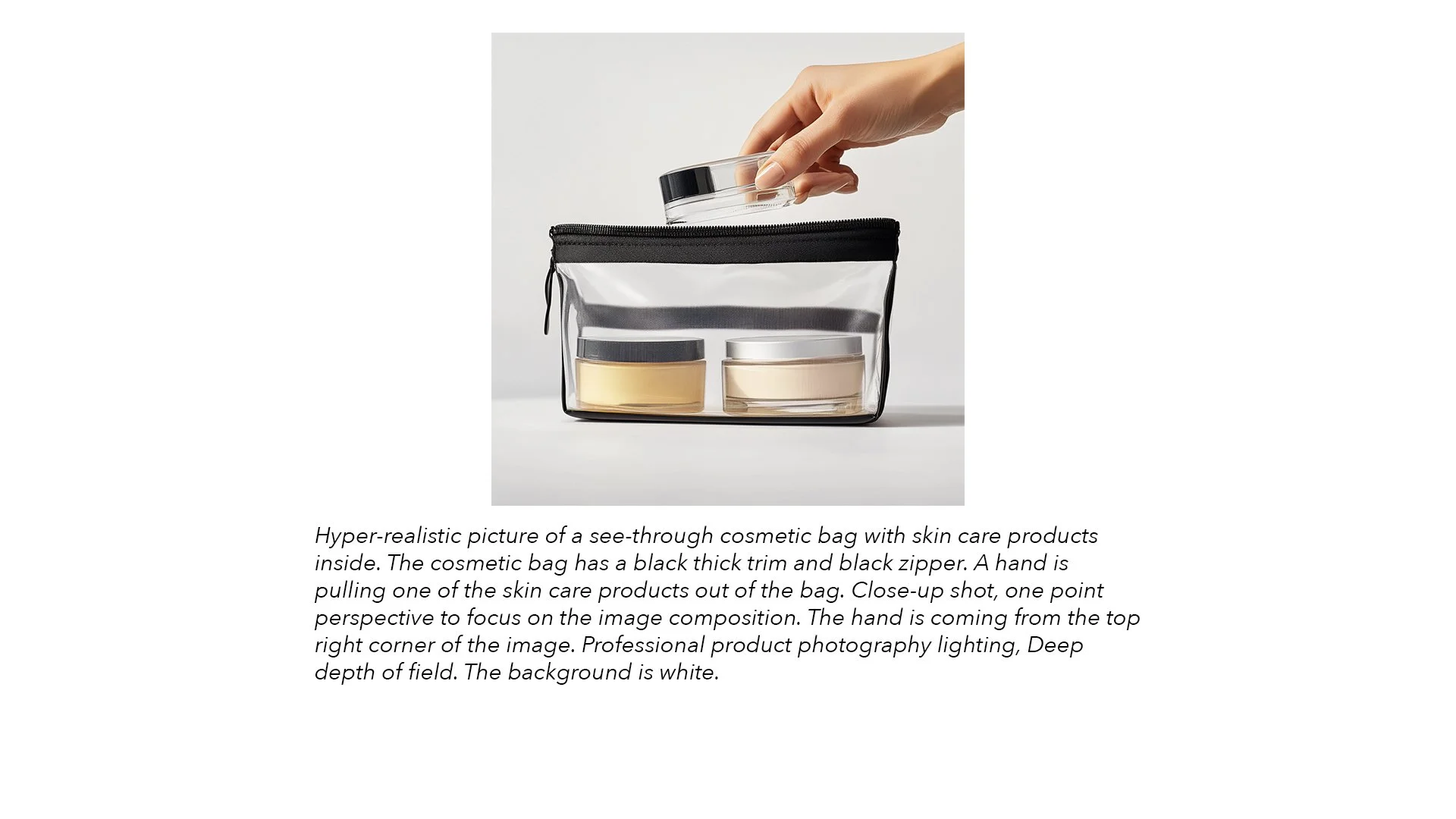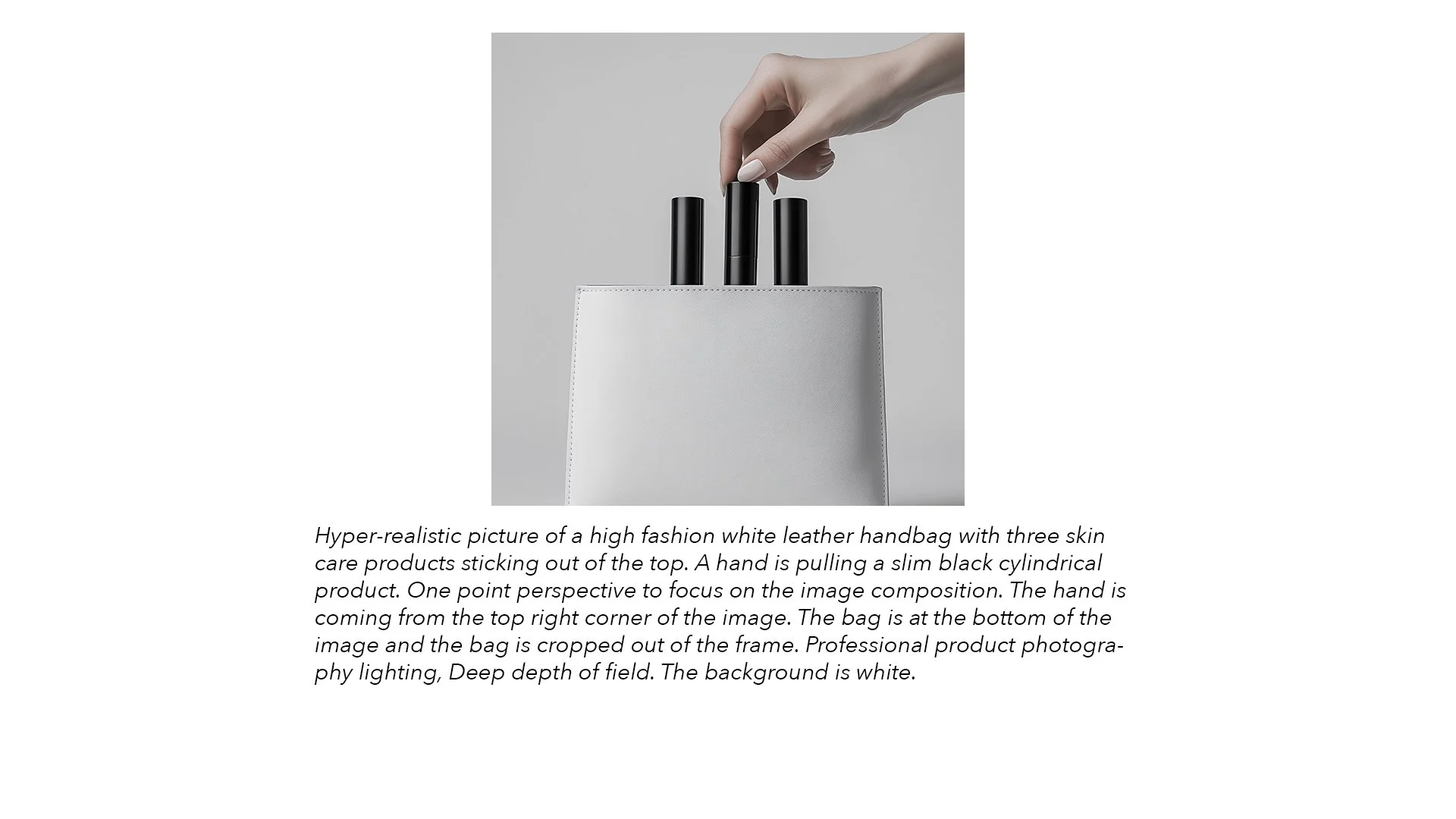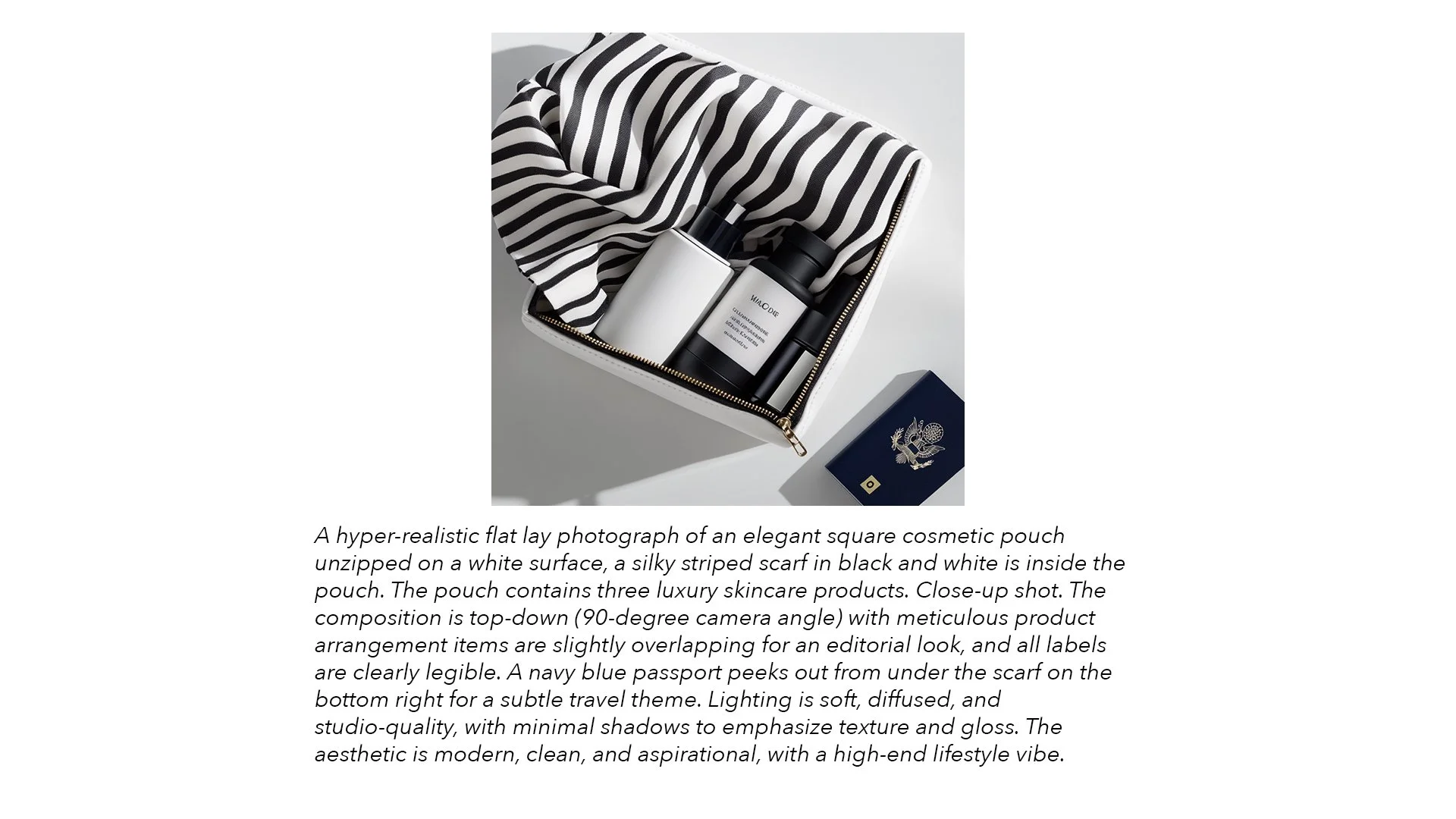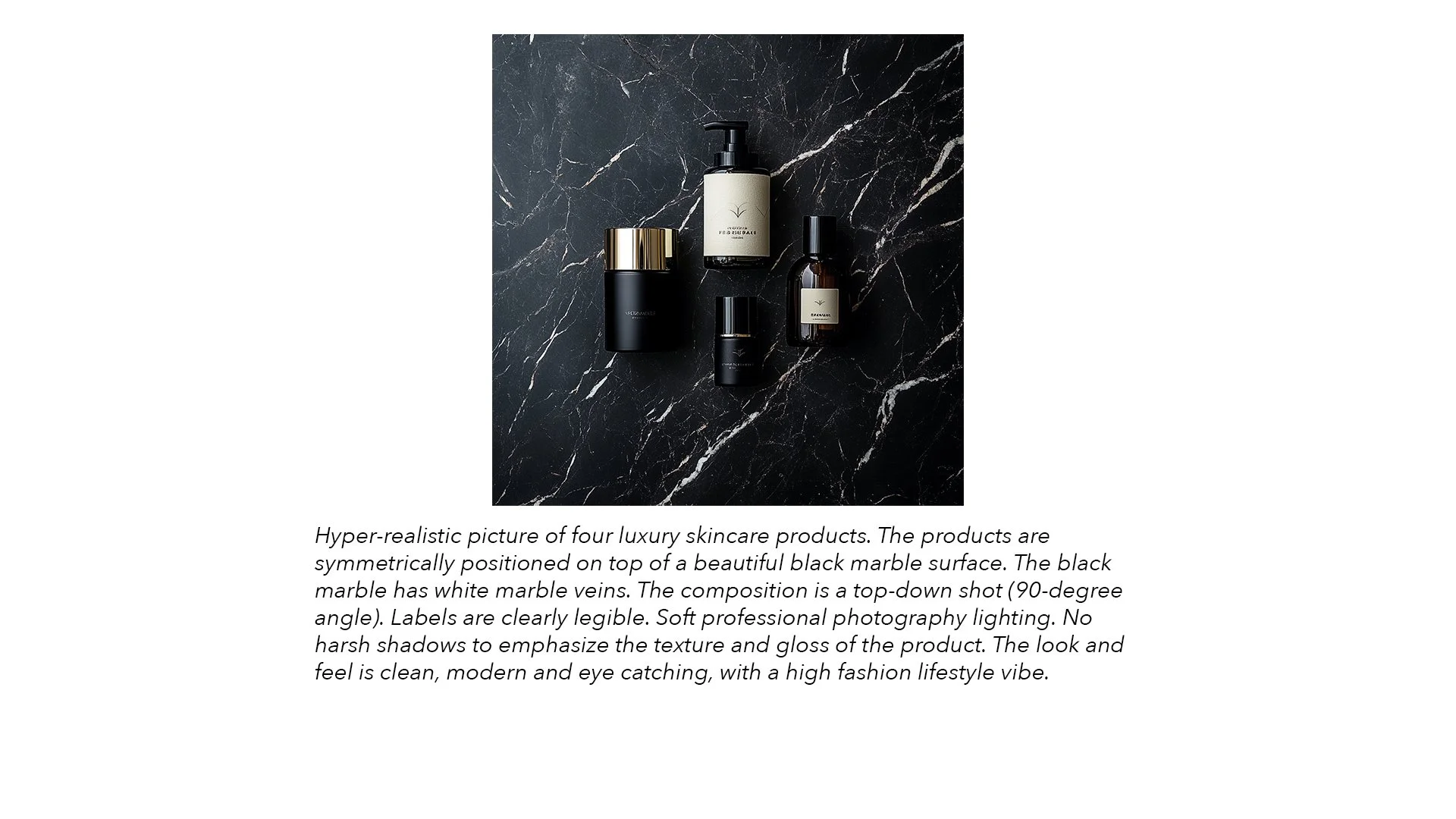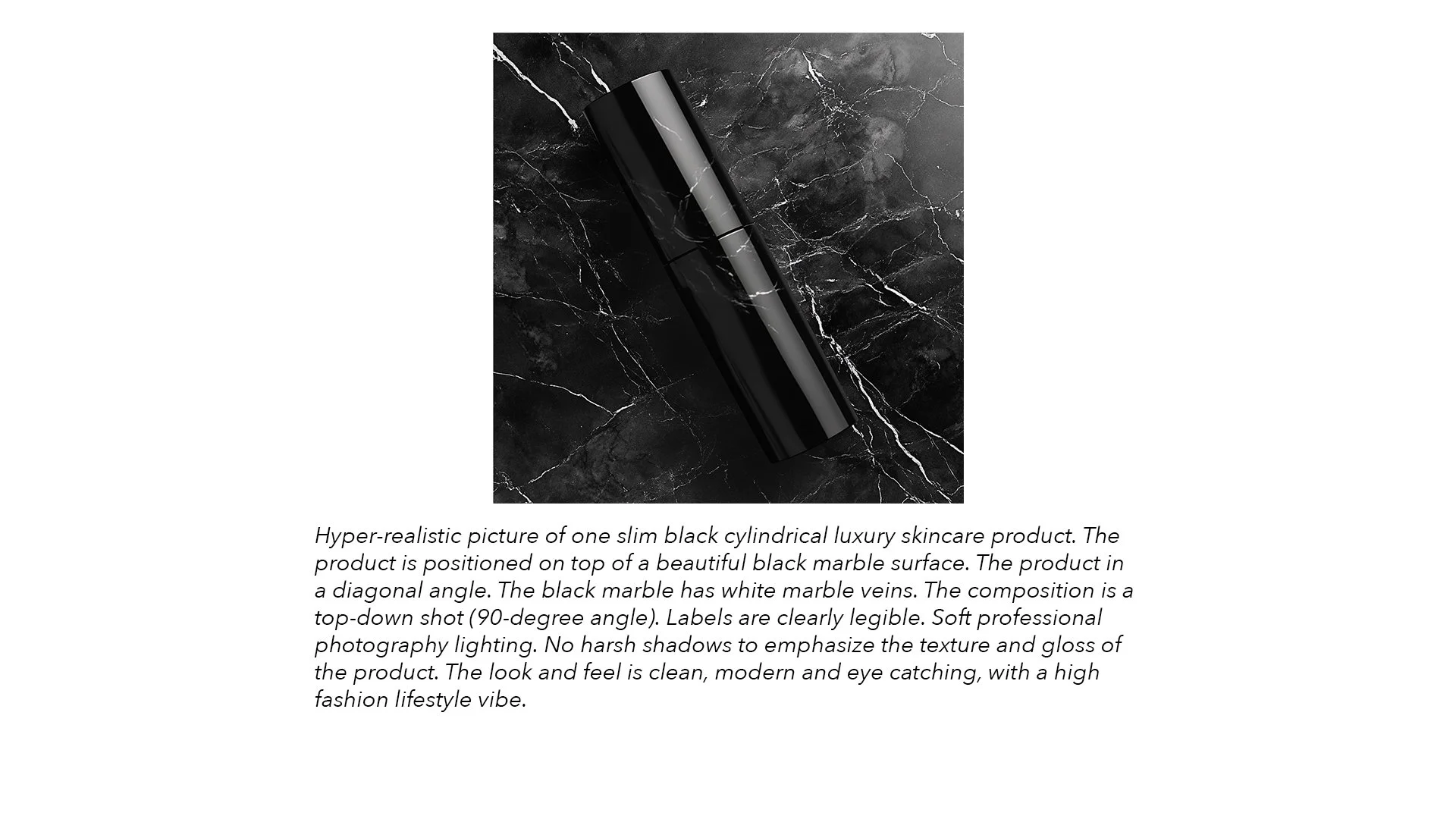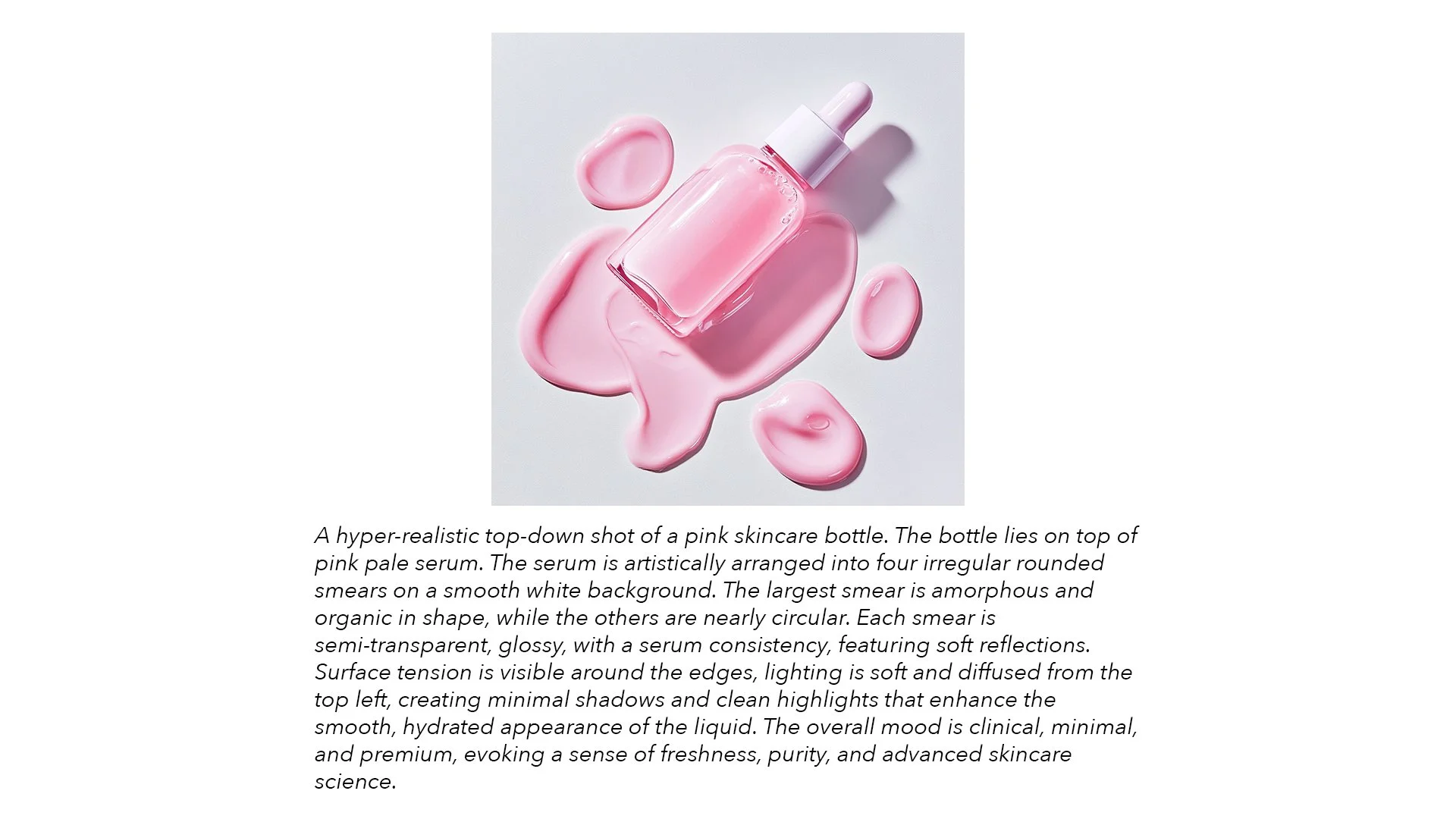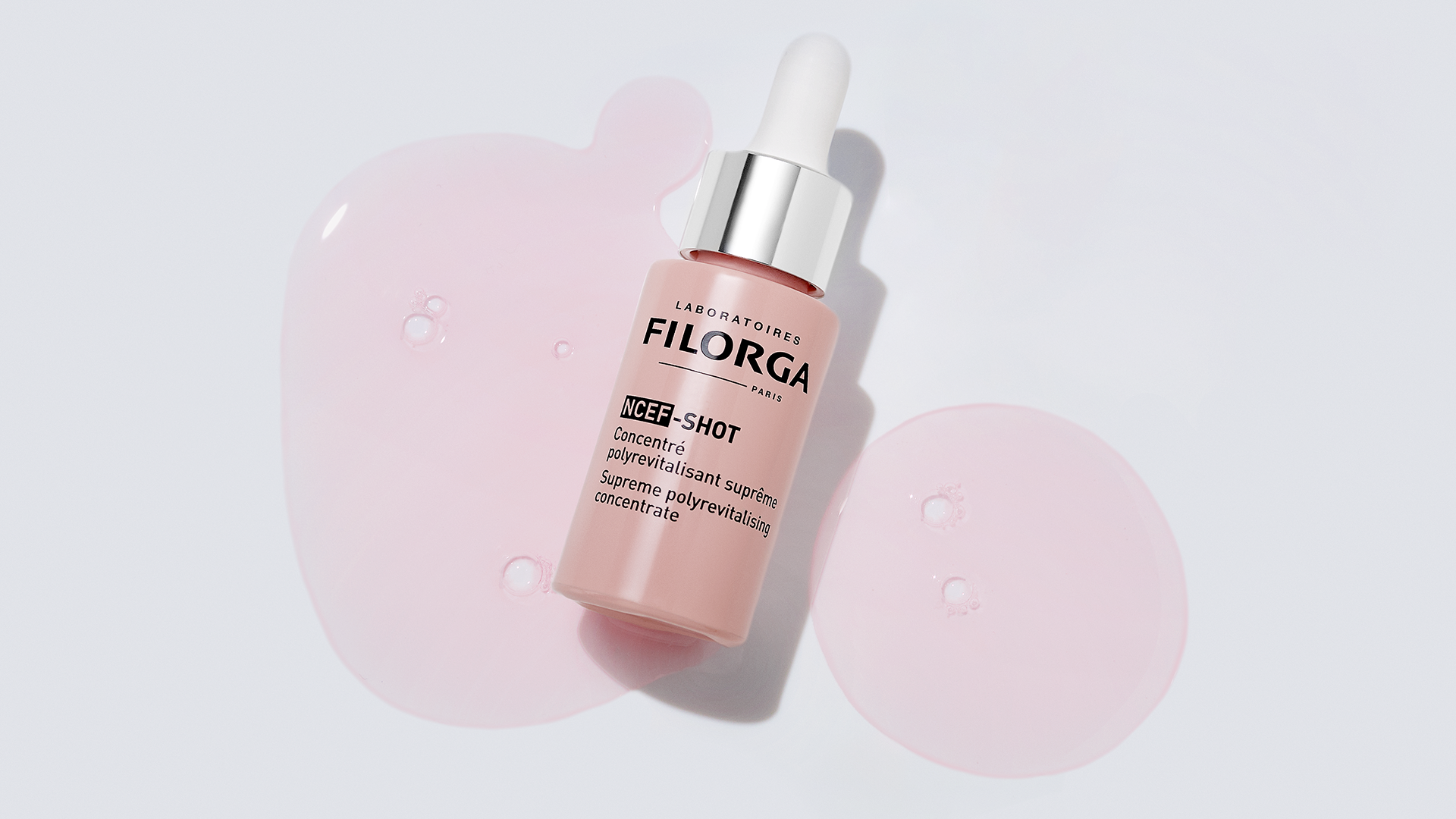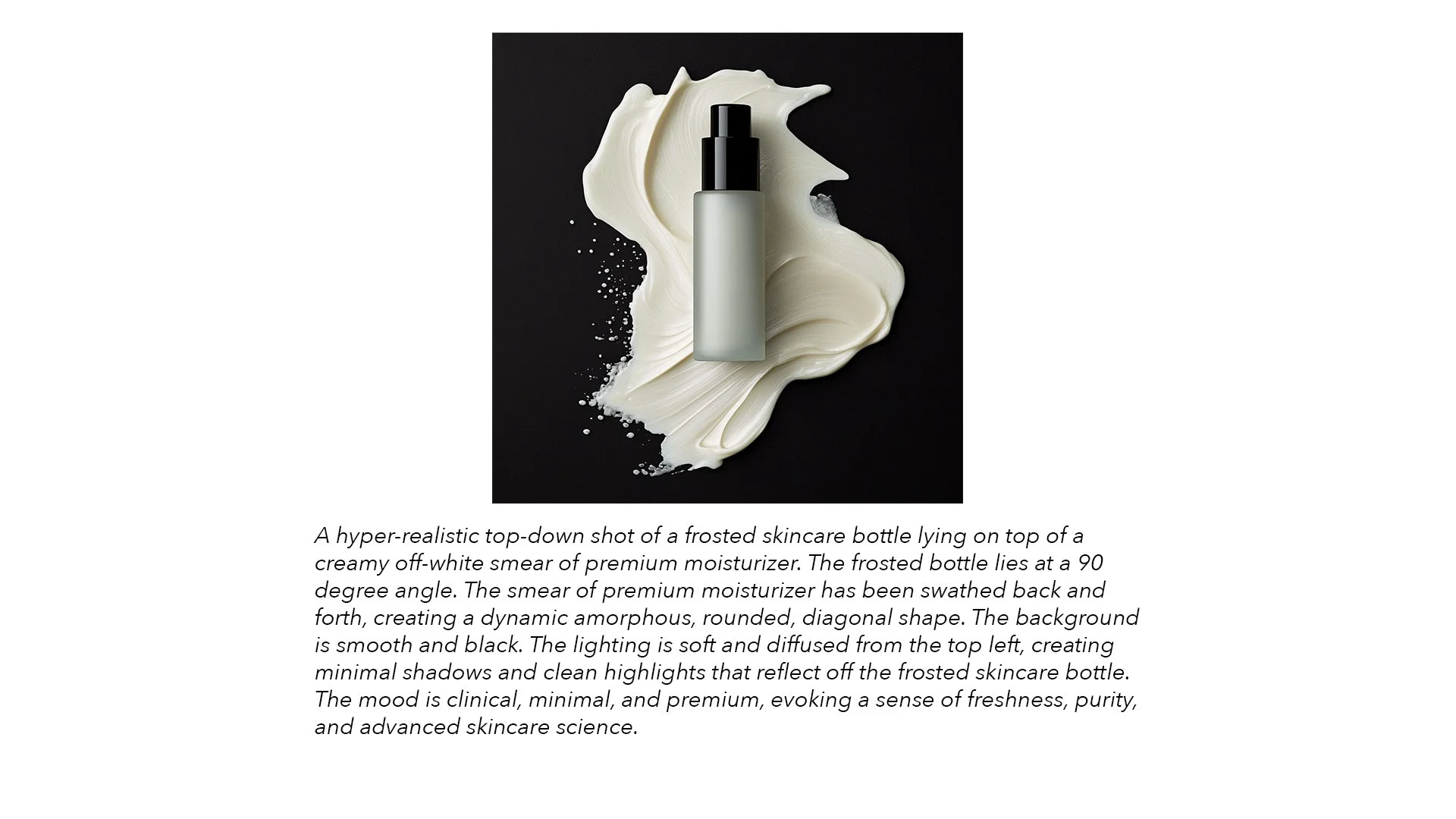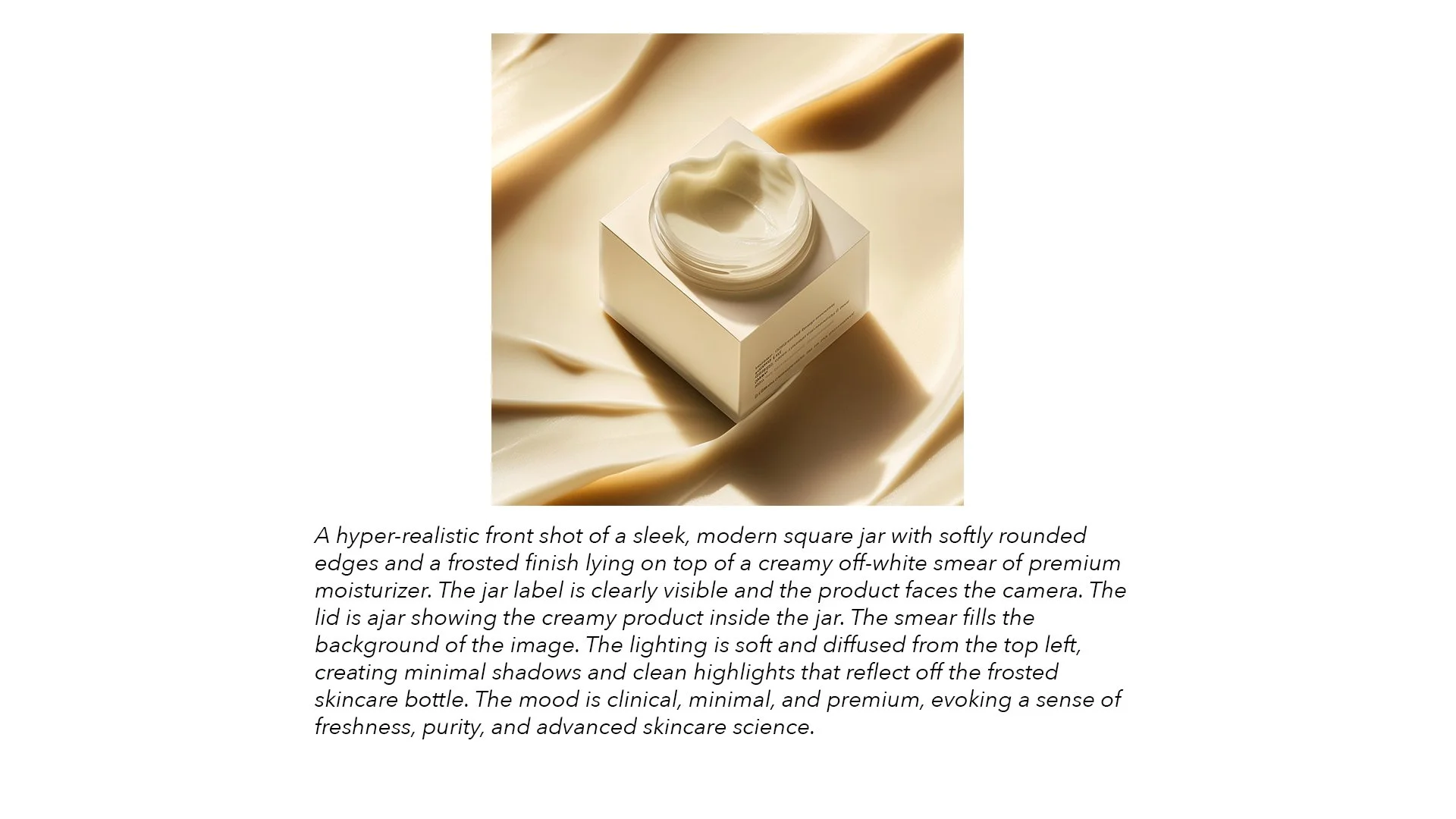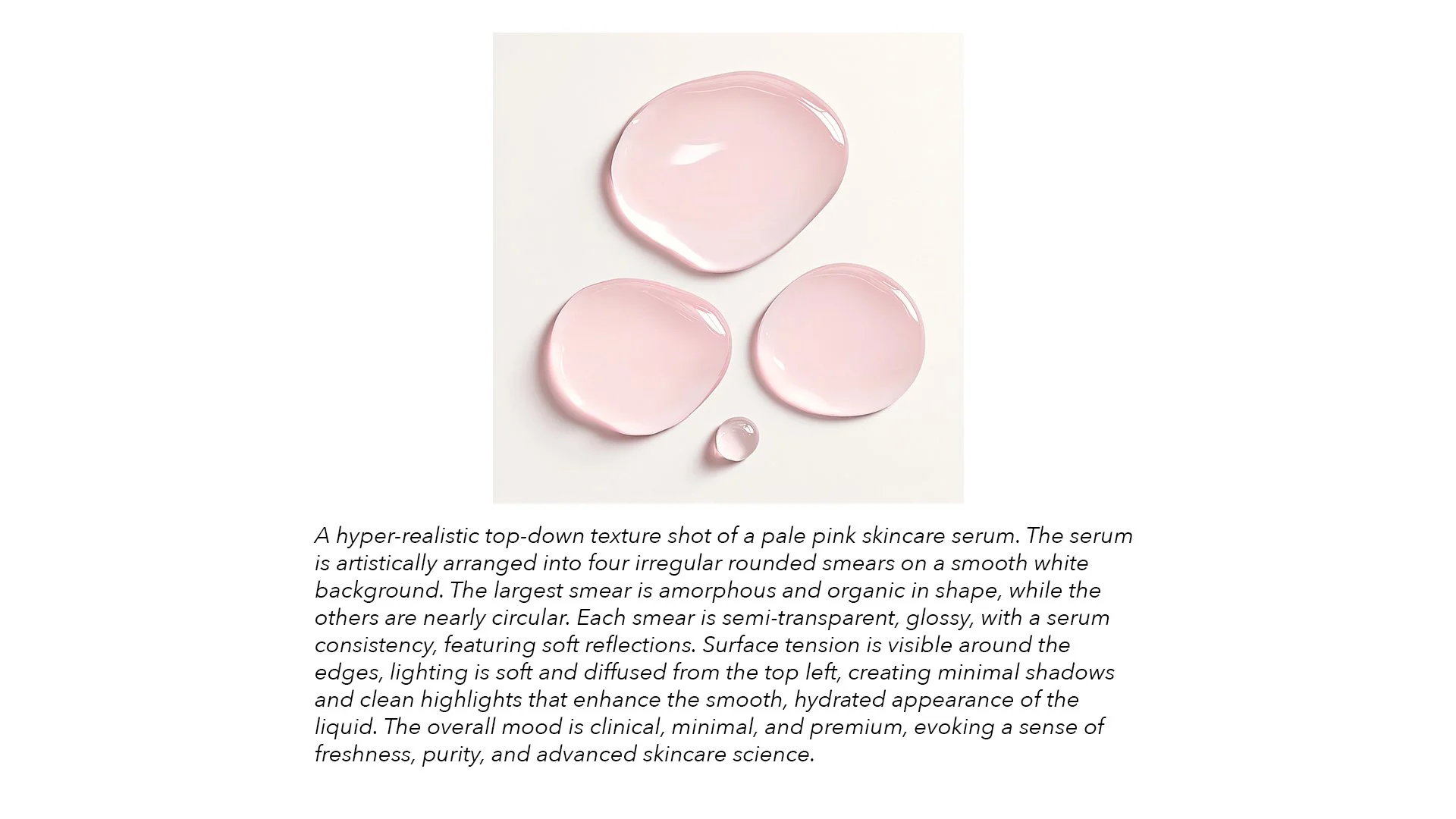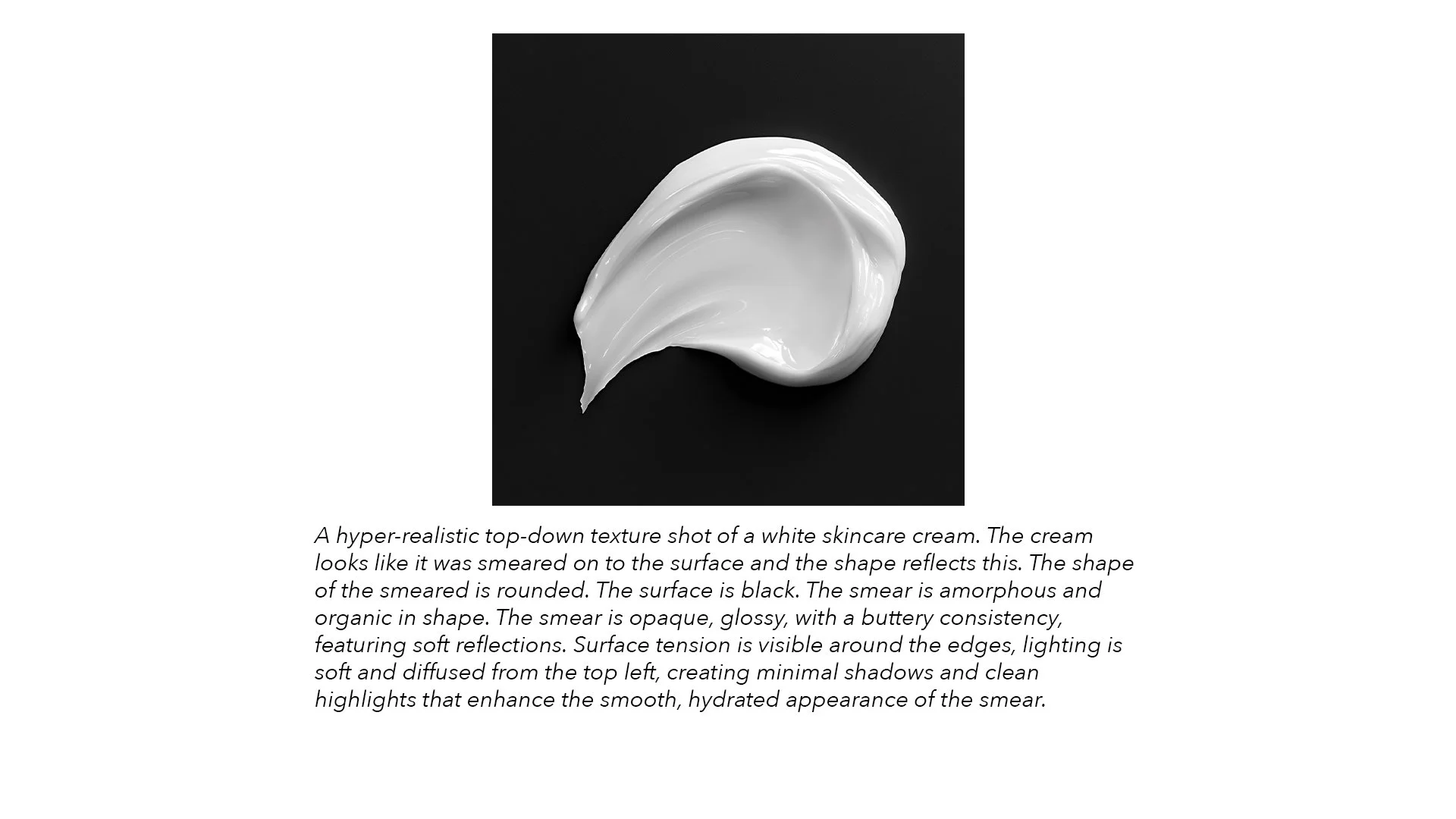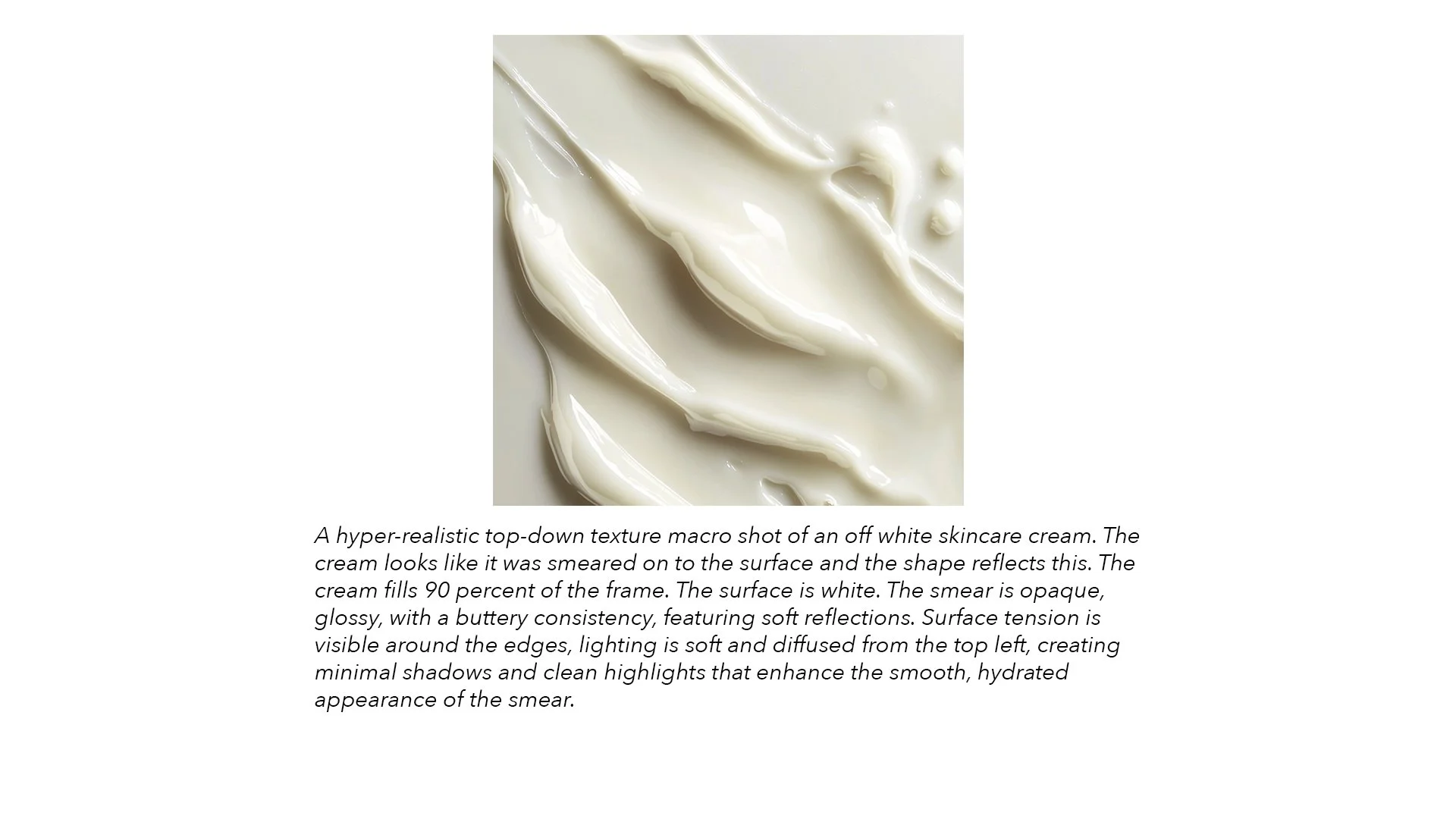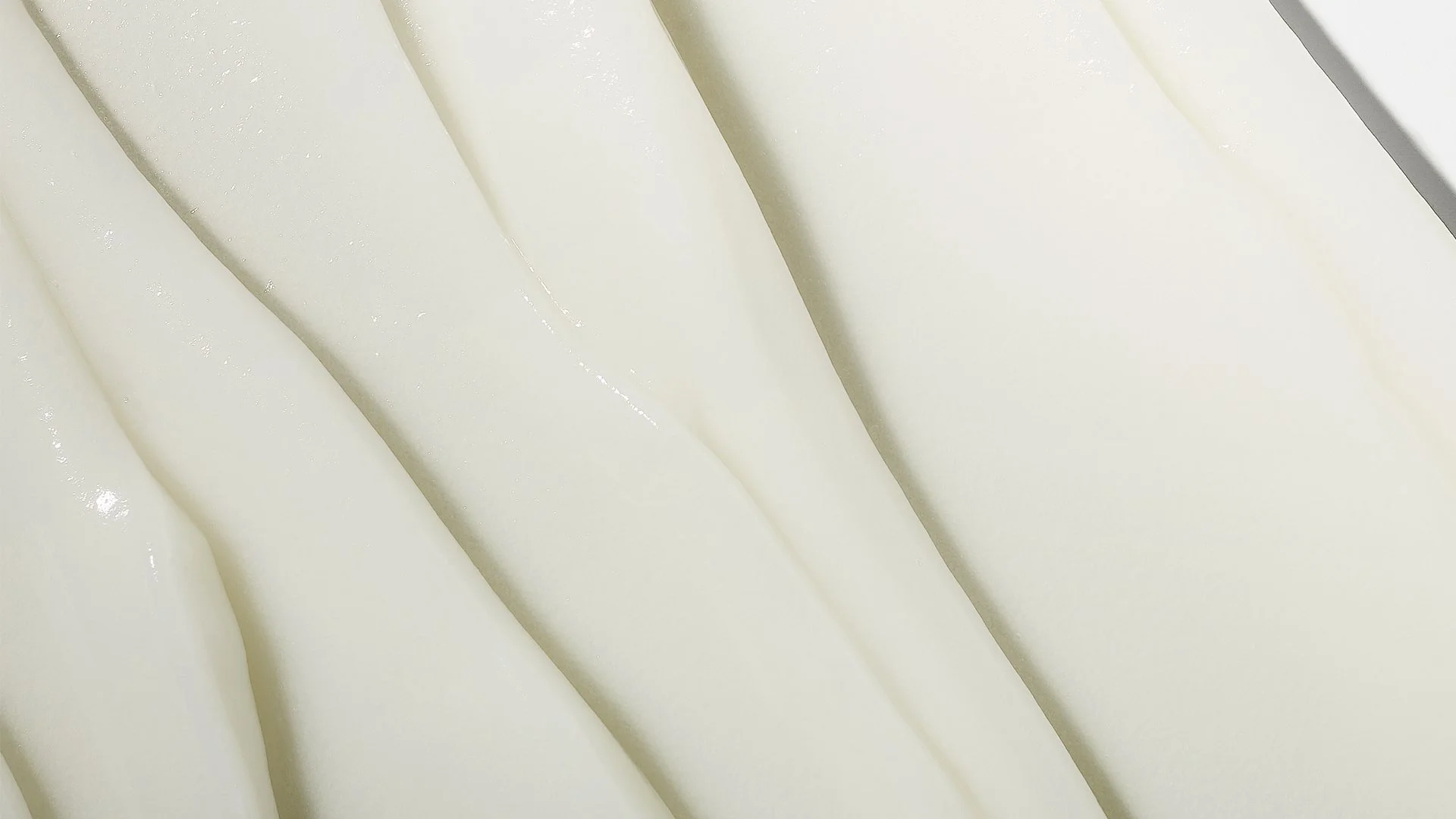FILORGA
THE TASK
As art director, I was tasked with handling the planning and execution of multiple photoshoots for a range of premium Filorga products. Due to a limited budget and a tight turnaround, it was more cost-effective for me to pitch the images using AI-generated renders. These renders were used as guidelines for the visual campaigns using actual Filorga products.
My approach
My approach to prompt engineering for image generation follows the formula of subject-setting-detail-detail-detail-mood-atomosphere. This is also known as the “2-4-2” technique. The ethos behind this technique is to inform the model using affirmative language to form a holistic scene that combines the elements cohesively, not in a list format, which leads to confusion and muddied and/or vague textures and elements.
CHALLENGES
The brand team had already endured several experiences with previous photographers in which the end results did not reflect the vision of the brand. The photographers would always take too much artistic liberty with the subject. Additionally, due to the budgetary constraints, I was not able to be present to direct these photoshoots—-the photographer was in LA.
GOALS
My goal was to create high-quality assets reflecting Filorga’s brand identity. My assets were intended to reflect the subject, framing, mood, and feel of the ad campaign. These assets were going to be used on social media, email blasts, web banners, and other digital campaigns.
RESULTS
The results were a resounding success. Very few edits and reshoots were necessary, and the AI images that I rendered provided excellent blueprints that informed the final campaign. The brand team was satisfied with the final assets, and we hit our target with time and budget to spare. Colgate ended up saving $70,000.

